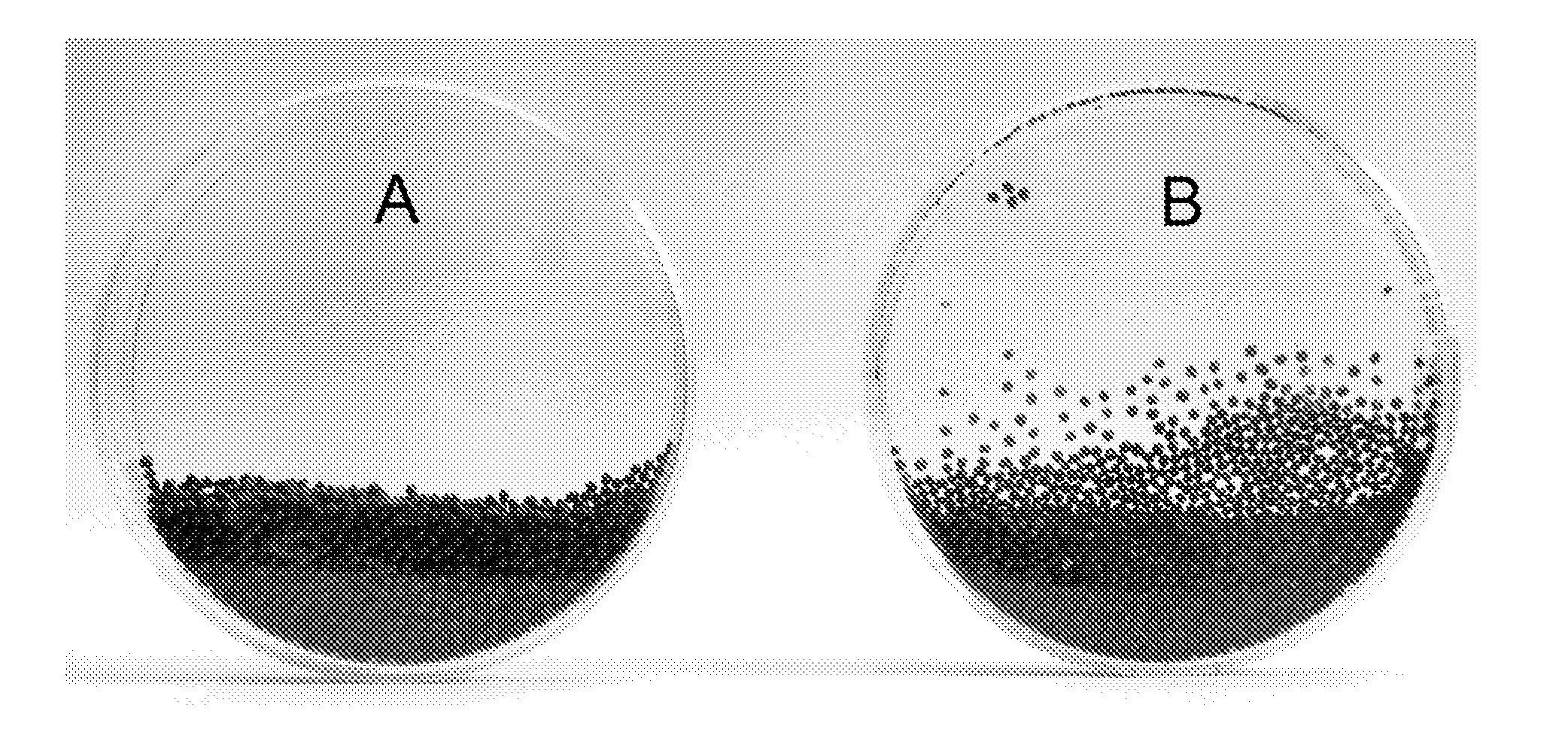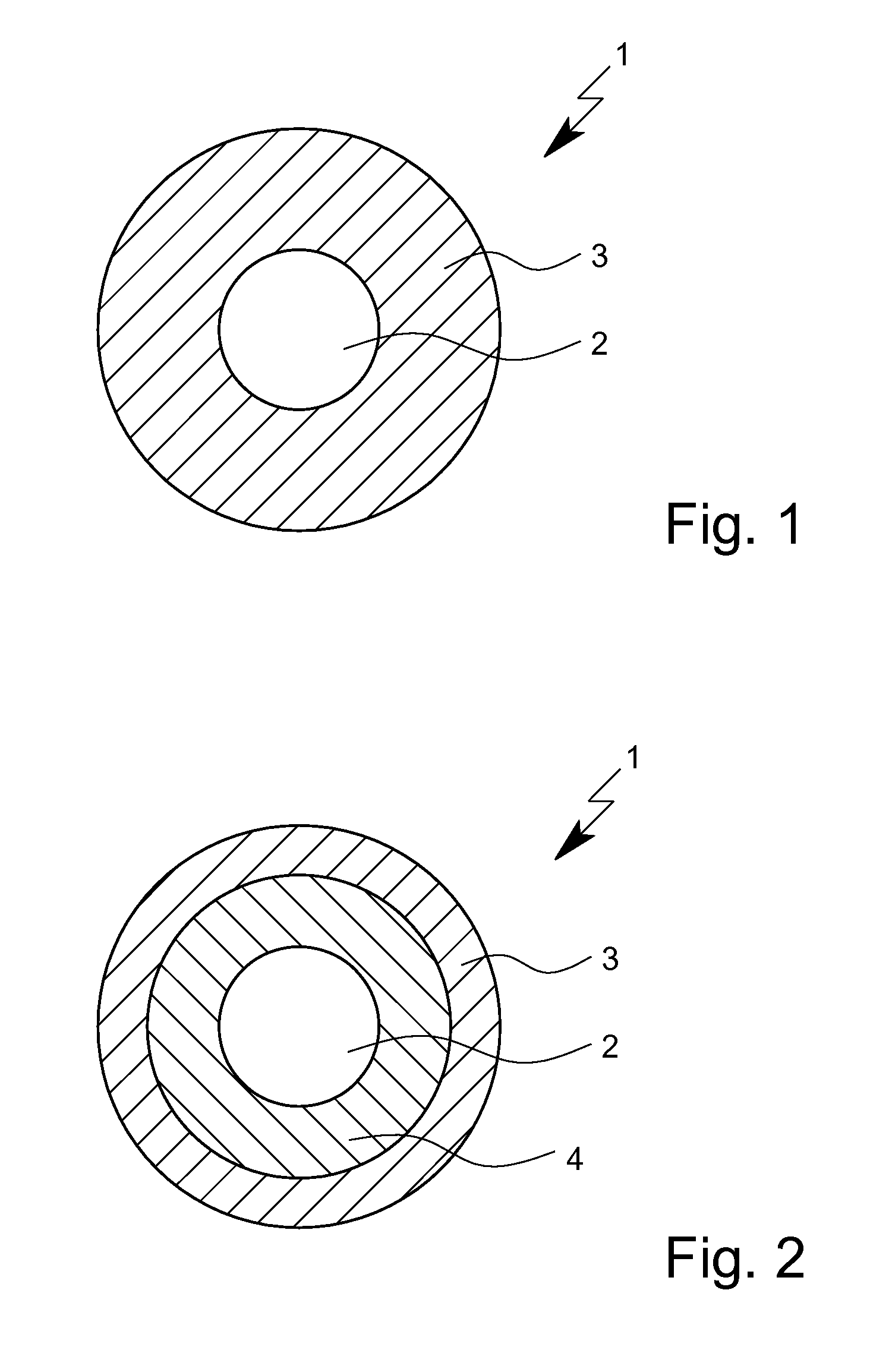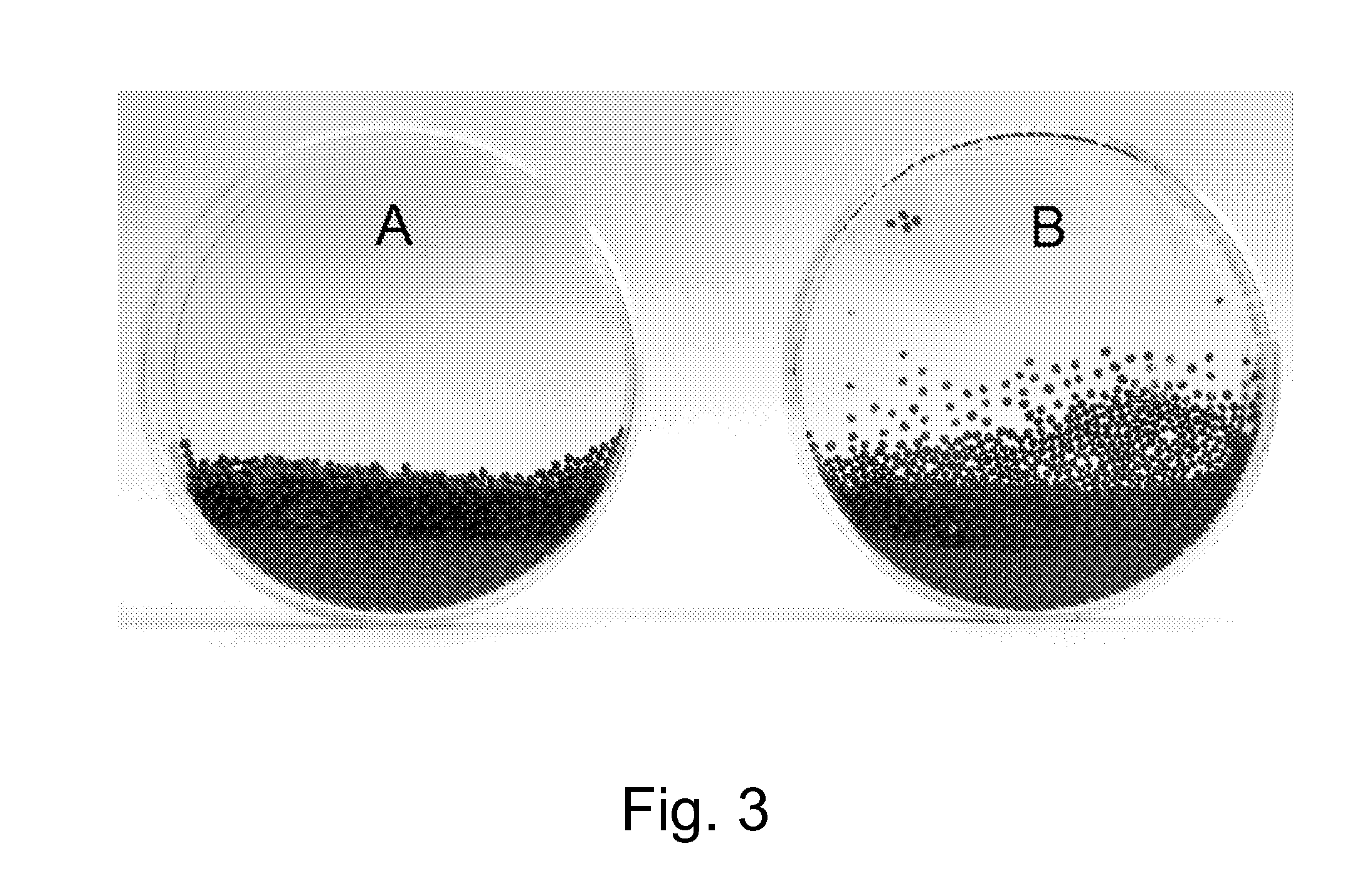Coating Composition and Use Thereof
a technology of coating composition and coating layer, which is applied in the direction of conductors, seed and root treatment, cellulosic plastic layered products, etc., can solve the problems of loss of yield, loss of quality or germination capacity, deterioration and/or unusability, etc., to improve the handling quality, high food safety and food compatibility, and high environmental compatibility
- Summary
- Abstract
- Description
- Claims
- Application Information
AI Technical Summary
Benefits of technology
Problems solved by technology
Method used
Image
Examples
working examples
Example 1
Use of a Coating Composition Based on an Aqueous CNT Dispersion (Inventive)
[0324]100 g of rape seeds are brought into contact with 1 g of an aqueous CNT dispersion containing 5 wt % of multiwall carbon nanotubes (product name of the dispersion: “LP-X 21829”, BYK Chemie GmbH). The seeds are coated in a DAC 400.1-1100.1 type SpeedMixer (model DAC 400.1 FVZ) from Hausschild at 1000 revolutions per minute for 30 seconds. In the course of this coating, the surface of the seeds is wetted as completely as possible. Thereafter the coating is briefly dried at room temperature.
[0325]The rape seeds thus coated are then investigated for their antistatic behavior in a polystyrene Petri dish (e.g., article number 391-0878 from VWR International). When the sealed Petri dish is shaken a number of times, no coated seeds are left adhering to the plastic walls because of static charging. The antistatic characteristics of the coated rape seeds are therefore outstanding.
[0326]In order to deter...
example 2
Use of a Coating Composition Based on an Aqueous Carbon Black Dispersion (Inventive)
[0327]100 g of rape seeds are brought into contact with 1 g of an aqueous carbon black dispersion containing 10 wt % of carbon black (product name of the dispersion: “LP-X 21564”, BYK Chemie GmbH). The seeds are coated in a DAC 400.1-1100.1 type SpeedMixer (model DAC 400.1 FVZ) from Hausschild at 1000 revolutions per minute for 30 seconds. In the course of this coating, the surface of the seeds is wetted as completely as possible. Thereafter the coating is briefly dried at room temperature.
[0328]The rape seeds thus coated are then investigated for their antistatic behavior in a polystyrene Petri dish (e.g., article number 391-0878 from VWR International). When the sealed Petri dish is shaken a number of times, no coated seeds are left adhering to the plastic walls because of static charging. The antistatic characteristics of the coated rape seeds are therefore outstanding.
[0329]In order to determine ...
example 3
Use of a Coating Composition Based on an Electrically Conductive Organic Polymer (Inventive)
[0330]100 g of rape seeds are brought into contact with 1 g of a coating composition containing 0.8 wt % PEDOT:PSS, poly(2,3-dihydrothieno-1,4-dioxin) poly(styrenesulfonate) (product name “ORGACON IJ-1005”, Sigma-Aldrich). The seeds are coated in a DAC 400.1-1100.1 type SpeedMixer (model DAC 400.1 FVZ) from Hausschild at 1000 revolutions per minute for 30 seconds. In the course of this coating, the surface of the seeds is wetted as completely as possible. Thereafter the coating is briefly dried at room temperature.
[0331]The rape seeds thus coated are then investigated for their antistatic behavior in a polystyrene Petri dish (e.g., article number 391-0878 from VWR International). When the sealed Petri dish is shaken a number of times, no coated seeds are left adhering to the plastic walls because of static charging. The antistatic properties of the seed grains coated in accordance with this e...
PUM
| Property | Measurement | Unit |
|---|---|---|
| Temperature | aaaaa | aaaaa |
| Temperature | aaaaa | aaaaa |
| Length | aaaaa | aaaaa |
Abstract
Description
Claims
Application Information
 Login to View More
Login to View More - R&D
- Intellectual Property
- Life Sciences
- Materials
- Tech Scout
- Unparalleled Data Quality
- Higher Quality Content
- 60% Fewer Hallucinations
Browse by: Latest US Patents, China's latest patents, Technical Efficacy Thesaurus, Application Domain, Technology Topic, Popular Technical Reports.
© 2025 PatSnap. All rights reserved.Legal|Privacy policy|Modern Slavery Act Transparency Statement|Sitemap|About US| Contact US: help@patsnap.com



